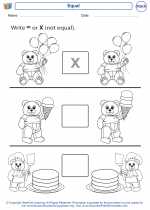Comparing Numbers
Comparing numbers is a fundamental concept in mathematics that involves determining the relative value of two or more numbers. It helps children understand the concepts of greater than, less than, and equal to. This skill is essential for building a strong foundation in math and is a precursor to understanding mathematical operations such as addition, subtraction, multiplication, and division.
Comparison Symbols
There are three main symbols used to compare numbers:
- Greater Than (>): This symbol is used to compare two numbers to determine if the first number is larger than the second number. For example, 5 > 3 means "5 is greater than 3."
- Less Than (<): This symbol is used to compare two numbers to determine if the first number is smaller than the second number. For example, 2 < 4 means "2 is less than 4."
- Equal To (=): This symbol is used to compare two numbers to determine if they are the same value. For example, 6 = 6 means "6 is equal to 6."
Comparing Numbers in Practice
When comparing numbers, it's important to consider the place value of each digit. For example, when comparing the numbers 35 and 49:
It's also important to understand that the position of the digits matters. For example, in the numbers 24 and 42:
- 4 is greater than 2, so 42 is greater than 24.
Using Comparisons in Word Problems
Comparing numbers is often used in word problems to help children understand real-world situations and make decisions based on numerical information. For example:
"Sara has 8 apples, and Tom has 5 apples. Who has more apples?"
In this case, children would use the greater than symbol to compare 8 and 5 and determine that Sara has more apples than Tom.
By mastering the skill of comparing numbers, children can develop a solid understanding of numerical relationships and build a strong foundation for future mathematical concepts.
For more practice and reinforcement, worksheets and interactive games can be used to aid in the learning process.
[Comparing Numbers] Related Worksheets and Study Guides:
.◂Math Worksheets and Study Guides Kindergarten. Comparing, and ordering
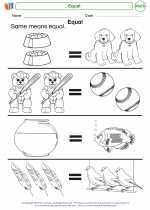
 Coloring Worksheet
Coloring Worksheet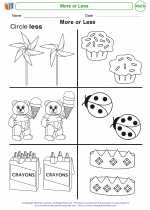
 Coloring Worksheet
Coloring Worksheet
 Worksheet/Answer key
Worksheet/Answer key
 Worksheet/Answer key
Worksheet/Answer key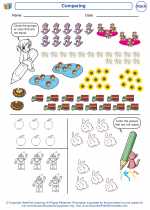
 Worksheet/Answer key
Worksheet/Answer key
 Worksheet/Answer key
Worksheet/Answer key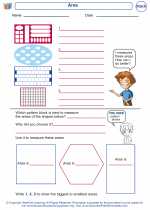
 Worksheet/Answer key
Worksheet/Answer key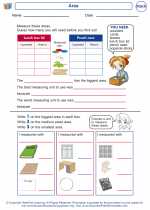
 Worksheet/Answer key
Worksheet/Answer key